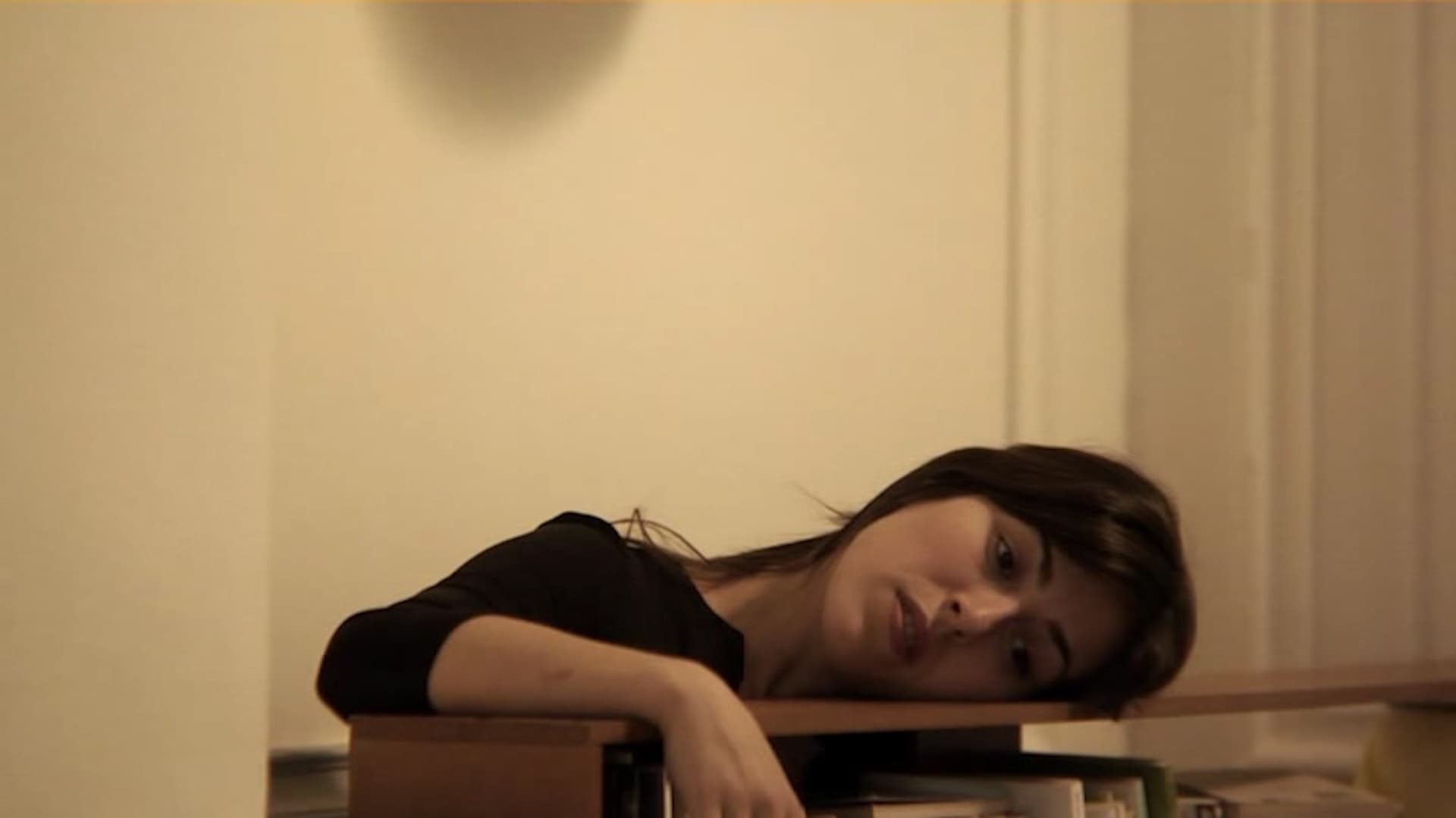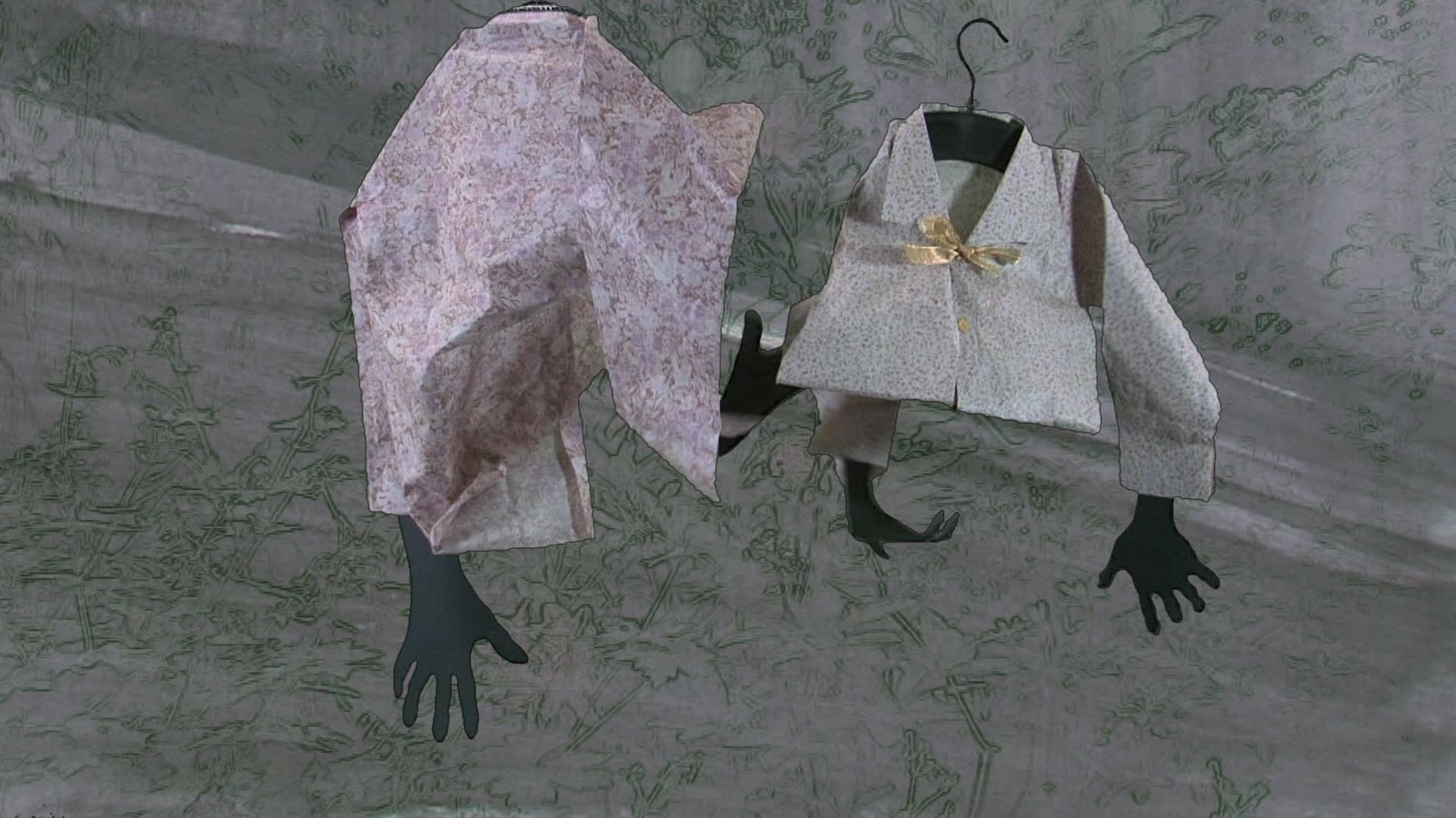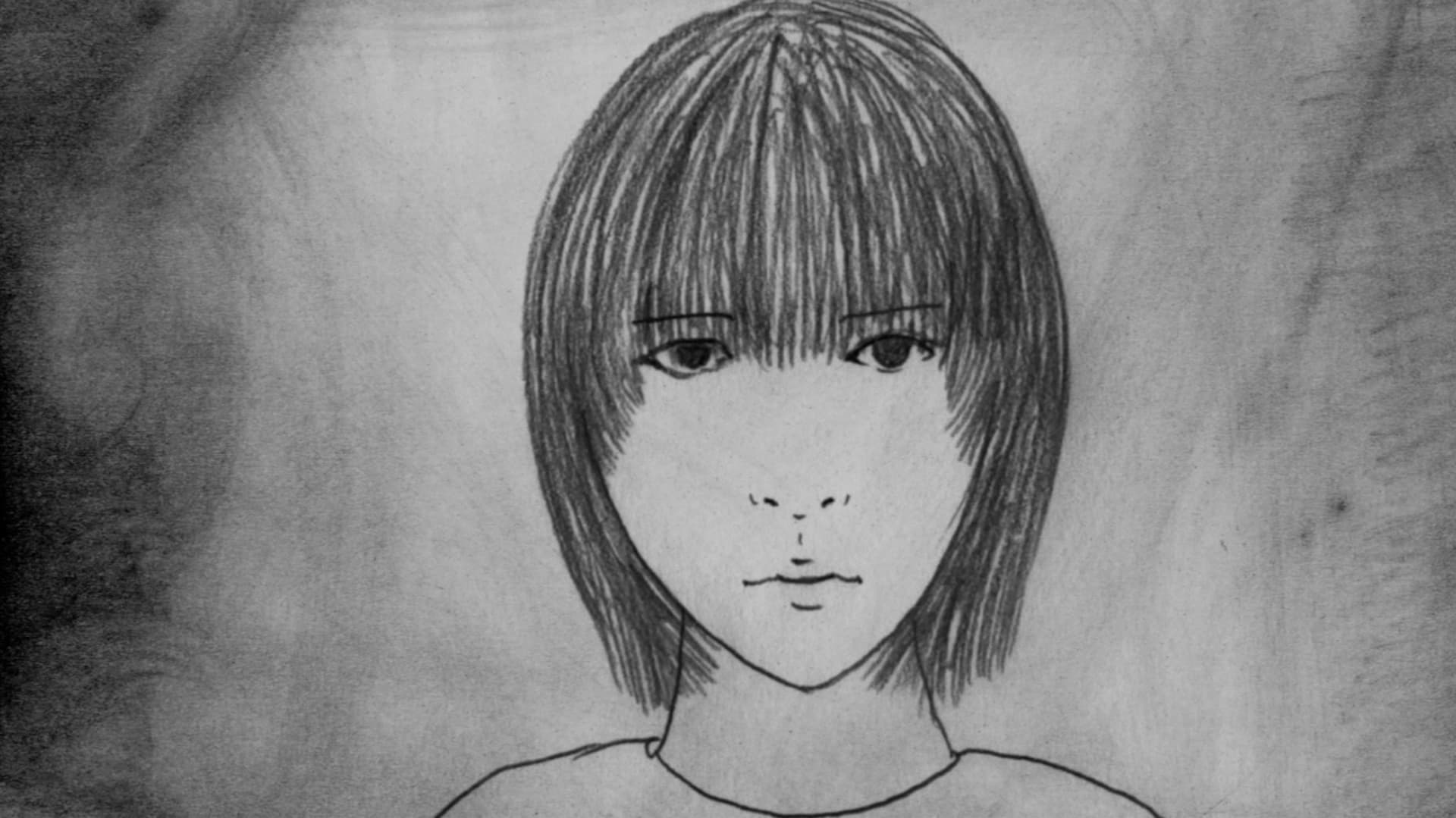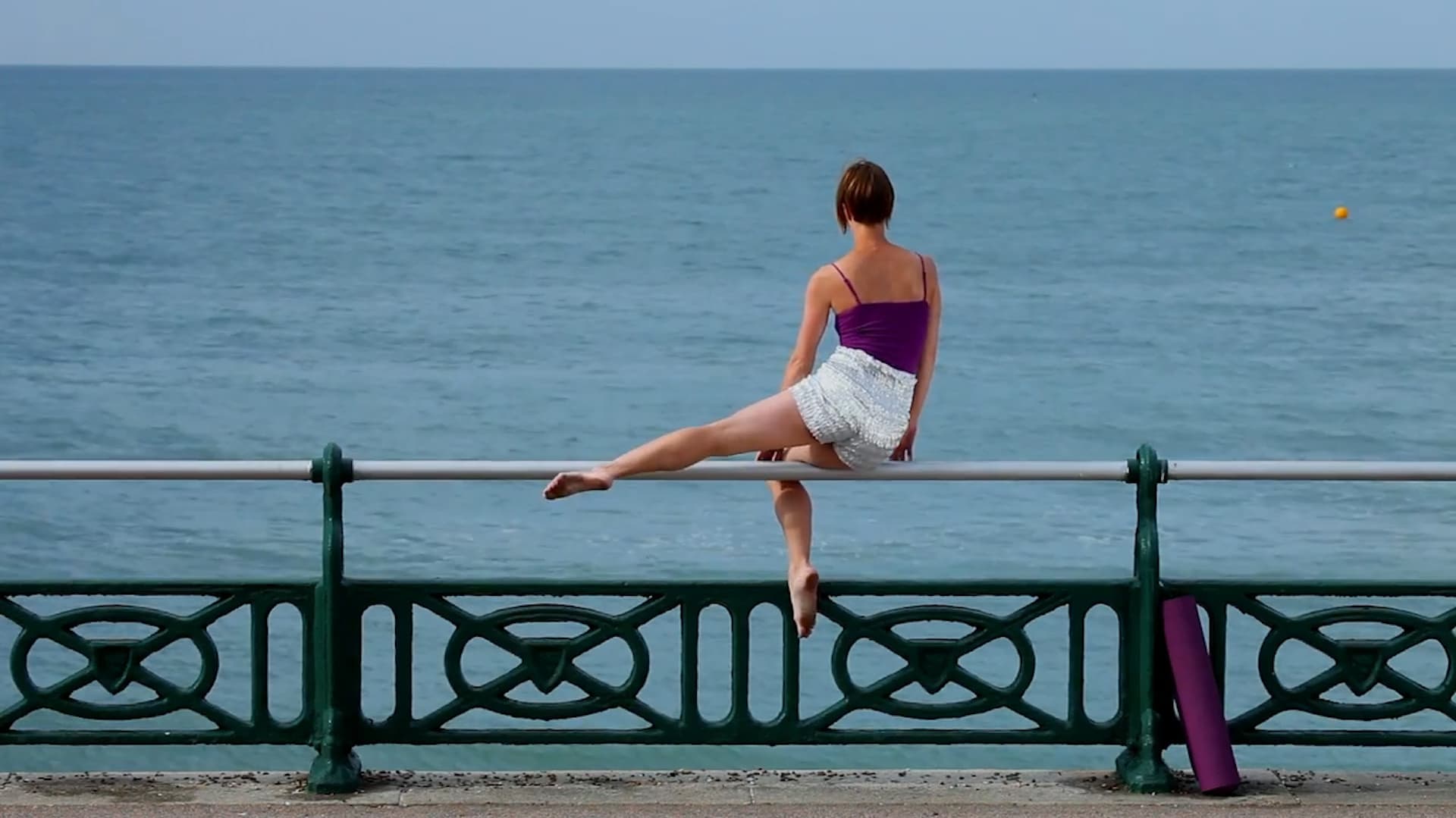TOP > 映像の視点
2020年9月23日(水)21:00〜翌日の昼12:00
映像の視点・4作品
Wed 23 SEP 9:00 P.M.〜12:00 P.M. JST (+UTC9)
Visions through videos
Derrière elle
彼女の後ろに
12’41
監督:Ishrann Silgidjian, Natalia Sardi, Laida Aldaz, Thomas Turine
振付:Natalia Sardi and Laida A. Arrieta
フランス 2009
ダンス映画監督たちへのメールインタビュー
A Mail Questionnair to Dance Film Directors
インタビュアー・翻訳:黒田瑞仁
監督として4人もの方がクレジットされています。監督の権限を一人に集約しないことで、困難もあったと思いますが、どのようにチームの連携をとったのですか。
むしろ、チームの力で作り上げた作品でした。全員がお互いを信頼している状態で共作できたのはとても豊かな経験でした。トーマスはサウンドと編集、イシュランは映像とカラーグレーディング、ジャンはあらゆる技術面で、ライダと私は動きと即興をそれぞれ担当し、それぞれの分野で自由に動きました。まずはイシュラン、ライダと私の3人で、映像と動作の関係について即興を多く交えながら検証を始めました。次にイシュランのアイカメラで撮影された映像をすべて見て、面白いと思えた要素を選んでいきました。これをもとに、全員で映画のストーリーと絵コンテを三日間使って書きました。
タイトルにはどのような意味は込められているのか教えてください。
英語で表すと題名は「Behind her(彼女の後ろ)」です。これは映画が完成した後につけられました。私が提案したところ全員が賛成してくれたんです。このタイトルが私たち自身や観客に想起させるあらゆることをとても気に入っています。なぜこのタイトルにしたかは上手く説明できません。多分、このタイトルは物事の裏側、見せかけの奥にあるもの、アクセスできないもの、微小なものと関係があるのでしょう。カメラが存在を証明したり、示唆することができる見えない誰か・・・
人体だけでなく、家具や家自体も動いて踊っているような作品でした。重力を意識させる動きが多かったように思いますが、振り付けはどうやって行ったのですか。
ライダとは当時、劇場の外でダンスや即興の仕事をしていましたが、私たちは人が暮らす空間に入り込んで、それぞれの家の空気、道具、匂い、音などを出発点に創作がしたいと思っていました。そのために私のアパートで練習していたのですが、トーマスがイシュランとジャンを連れてきて相談の結果、一緒に映画を作ろうということになりました。「彼女の後ろにDerrière Elle」の後は、「デリバリー・パフォーマンスDelivery Performance」という誰かの家で作品を作り上げるプロジェクトを行いました。
作中の振り付けについては、物体と身体の重要度は同じだと考えました。物体としての身体を扱いました。物体の状態から、非物体である身体の状態へと移行する身体。その挑戦の成否はご覧の通りです。同じく空間のもつ可能性を分析しました。接続した部屋たちは、それぞれを「章」として扱うことができ、接続していることで視界に奥行きが生まれました。音については振り付けを作るのと同時に楽譜を作成しました。
この作品に登場する部屋は、フランスでは当たり前の家や内装だと思いますが、(日本人からすると一般的には馴染みがない部屋なのですが)この家で制作することになったのはなぜしょうか?そして、この家だからこそ存在する身体性というのはどんなものだと思われますか?
これは典型的なベルギーのアパルトマンです(フランス式ではありません)。
三部屋が一列に並んだこのアパルトマンは、十九世紀初頭のブリュッセルに現れたメゾン・ド・メイドル(Maison de Maitre)建築の典型例です。このような形の一軒家は、その後多くがアパルトマンとして分割されました。そのため真ん中の部屋は、外界や日光に接することがありません。
私たちとトーマスは、この家屋の一階に住んでいました。「この家で制作することになったのはなぜしょうか?」という質問への答えは、一つ前の質問の答えの中にあります。そこが私たちの生活の場だったからです。
There are four people credited as director. I'm sure there were some difficulties having several directors and the authority not belonging to one person. How did the team work together?
On the contrary, it was a real team effort, we all had confidence in each other, it was very rich to be able to work like that. Everyone had a lot of freedom in their field, Thomas in sound and editing, Ishrann in image and color grading, Jean in all the technical aspect, Laida and myself in movement and improvisation. We started to work on Ishrann, Laida and me, on image and movement with a lot of improvisations. Then looking at all the images captured by Ishrann's eye-camera we made a selection of interesting elements. On the basis of these elements resulting from improvisations, then, we all wrote together, for 3 days, the story of the film, the storyboard.
What does the title mean? Why did you name the film this way?
The title in English is "Behind her". The title was born after the film was finished. When I proposed this title, all the members of the group agreed. We really like everything that this title evokes with us, with the spectator. I can't explain the reason for choosing the title! ... Maybe the title has a link with the other side of things, what is behind appearances, the inaccessible and the tiny. An invisible person whom the camera can testify or suggest…
It was as if the furniture and the house itself were moving and dancing as well as the dancers. How did you come up with the choreography for this piece?
With Laida we worked at the time on dance and improvisation outside the theater stages, we wanted to go into people's living spaces and work from the atmosphere of each home, its objects, its smells, its sounds, etc. So we were training in my apartment, Thomas arrived with Ishrann and Jean and after some discussions we decided to try to make a film together. After "Derrière Elle", we continued to work on the real-time composition of a piece in people's homes with our "Delivery Performance" project.
Regarding the choreographic work of the film, we decided that objects and our bodies had the same status of importance. We worked on the body as an object, the body moving from the state of an object to the state of a non-object body, the failure and success of this attempt. We also analyzed the possibilities that the space offered to us in terms of space, the interconnecting rooms which allowed to create "a chapter" for each room and the fact that it was interconnecting gave a lot of depth of field. With the sound we composed the score at the time we composed the choreography.
I assume this kind of house and interior is quite common in France. Why did you come to make this film in this house? What kind of physicality do you think exists in this specific house?
This is a typically Belgian apartment (and not French.)
These three-room apartments in a row are typical of the architecture of the Maison de Maitre from the very beginning of the 19th century in Brussels. These whole family houses were generally subsequently divided into several apartments.The central room is therefore deprived of any relation to the exterior and to the light of day.With Thomas we lived on the ground floor of one of these houses.
Related to your question "Why did you come to make this film in this house?" I think the answer is in my previous answer. It was our place of life.
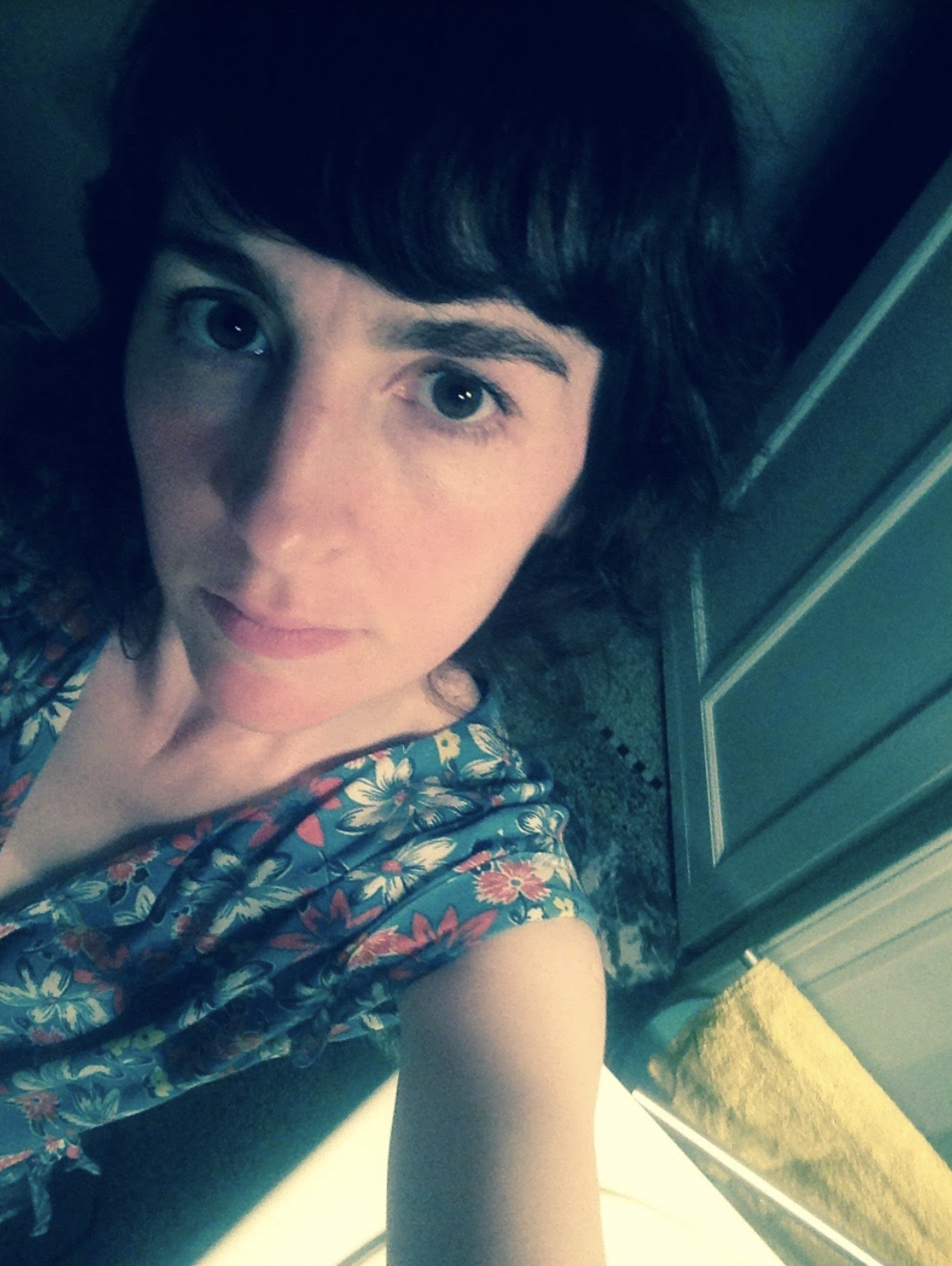
ナタリア・サルディは、ベルギー出身の振付家、映像作家、ダンサー、歌手。ブラジルに生まれ、アルゼンチンのブエノスアイレスで育つ。
アルゼンチンのグラル・サン・マルティン劇場のプロフェッショナル・コンテンポラリー・ダンス・スクールならびに、ナショナル・スクール・オブ・ダンスN°2ホルヘ・ドンで学び、奨学生としてハイチ・アカミネ、振付家のカルロス・カゼッラに師事。
卒業後、アルゼンチンとヨーロッパで多数の振付家、演出家、ビジュアル・アーティストとの共作を行う。
現在はブリュッセルを拠点に活動。自らダンス、映画、音楽などのプロジェクトの企画と創作を一人で行うか、ブリュッセルやスイスを拠点に活動するアーティストとのコラボレーションを展開。
映像作品は世界中を巡り、各種映画祭での受賞多数。
“自分が生活している環境の中で創作をしながら、現実の隙間を探している。私が探しているのは世界の曖昧な捉え方で、発見したいと願うのは微妙な差異や、大きくて素晴らしいものたちだ。"
www.nataliasardi.com
Natalia Sardi is a Belgium choreographer, filmmaker, dancer and singer. She was born in Brazil and she grew up in Buenos Aires, Argentina.
She studied at the "Professional Contemporary Dance School at the Theatre Gral San Martin", "The National School of Dance N° 2 Jorge Donn" in Argentina as a scholarship student with Haichi Akamine, choreographer Carlos Casella.
After her studies she has performed, collaborated with several choreographers, theater directors, visual artists in Argentina and Europe.
Currently, she works and lives in Brussels and she creates and develops her own projects in dance, film and music, alone or in collaboration with other artists based in Brussels and Switzerland.
Her films have traveled all over the world and have won several awards at film festivals.
"Working in my own familiar living surroundings I look for gaps in our reality. I am searching for a more obscure take on the world hoping to discover subtle differences or something bigger and more fantastic."
More information: www.nataliasardi.com
Afterlife's Dance
死後の踊り
2’39
監督:Jacqueline Kooter
オランダ 2015
ダンス映画監督たちへのメールインタビュー
A Mail Questionnair to Dance Film Directors
インタビュアー・翻訳:黒田瑞仁
まず最初に、あなたについて教えてください。どういう作品を作ってこられましたか?
Jacqueline Kooter:私はオランダ、アムステルダムのビジュアルアーティストでJacqueline Kooterと言います。私のビジュアル作品は人間の身体の強さと脆さの両方、そして人間関係の複雑さについて扱っています。
私の専門は設置場所に強く結びついた大型インスタレーションと、アニメーション風の短編映画です。これらの映画では私は架空の世界を作り出し、(人間の)誰かがそこを動き回ります。本当に人間の時と、切り出された紙の人物の時があります。私は絵描きだったことがあり、今でも絵を映画の要素として使っています。私の短編映画のうち幾つかは、ダンス映画として捉えることができます。
クレジットにDancers /performer paper jackets(ダンサー/出演 紙のジャケット)とあります。彼ら、もしくはそれらは、一体何者なのでしょうか。
Jacqueline Kooter:2つの紙のジャケット(手は付いていない状態)はもともと香港で見つけた品物で、中国の清明節のお祭りのために作られたものです。
清明節は死者を悼み、敬意を示すための日です。人々はさまざまな作りもの(紙だけで作られています)を墓の上で燃やし、死者がアフターライフ(※訳者注 来世、あの世)で困らないようにするのです。私は紙のジャケットを恋仲にある2人の登場人物として扱っています。
どうやって彼らに振り付けたのでしょうか?
Jacqueline Kooter:私は紙の両手をジャケットに付け加えました。動いた時により表情を出すためです。ジャケットは風ではためいています。撮影した映像を編集することが、私にとっての振り付けです。
人間不在のダンス、というのは衝撃的でした。逆に何があればダンスといえるのでしょうか。あなたの考えを教えてください。
Jacqueline Kooter:私の考えでは、私たちはダンスを動きの質とリズムによって感じています。風は紙のジャケットに素晴らしい動きの質をもたらし、両手によってさらにそれが強調されます。撮影した映像を厳選し、音楽にあわせて編集していくことでダンスになっていくのです。
この映画にストーリーはあるのでしょうか?二人のキャラクターの間に何かが起こっているのか、それともただ純粋なダンスとして表現されているのでしょうか?
Jacqueline Kooter:概要はこうです。「2人の紙の人物はあの世で、ダンスの続きを踊るために互いを求める。愛する時もあれば、愛さない時もある。」
音楽はヨハン・ゼバスティアン・バッハ(バロック期の18世紀に活躍したドイツの作曲家)によるものです。
チェンバロ協奏曲第4番 イ長調 BWV 1055の一部を使いました。最初の流れのラルゲットは幾分ゆっくりとしていてムードがあり、人物たちは離れ離れでお互いを探しています。2番目の動きのアレグロは軽くて、喜びに満ちています。とうとう2人はあの世でもお互いと巡り会い、ダンスを続けるのです。(愛する時もあれば、愛さない時もある。たまに喧嘩をしているようにも見えます。)一緒に生きることは簡単ではありません、それが死後の世界だとしても。
以前質問でお答えいただいたように、この作品は誰かと一緒にいることを描いた作品なのですね。あなたは他の作品でも紙をよく使って、人間を表現するようです。紙はあなたにとってどういう意味がある素材ですか。
私は作品では人体の脆さを扱っていて、紙は脆い素材です。つまり、扱っている素材と私の作品意図はぴったり重なるのです。それから、繊細な素材にボリューム感を持たせることは挑戦なんです。今回は風と動きを使っています。
Please tell us about you, and what kind of pieces you have made in the past.
Jacqueline Kooter:I am Jacqueline Kooter, an visual artist from Amsterdam, The Netherlands.
My visual work is about both the strength and the vulnerability of the human body and about the complexity of human relations.
I am specialized in site-specific large installations and in the production of short animation-like movies. In these movies I create an imaginary world, where (human) figures are moving around; sometimes real people and sometimes cut-out paper figures. I used to be a painter and I still use painted elements in my movies. Some of my short movies can be considered to be dance movies.
On the credit it says ‘Dancers /performer paper jackets’. Who or what are they?
Jacqueline Kooter:The two paper jackets (without the hands) are original Qingming objects from Hong Kong.
They are being manufactured for the Qingming Festival in China. This is the day for mourning and honoring the dead. People burn all sorts of artificial goods (entirely made out of paper) on the grave, so that the dead are well taken care of in the afterlife.
I use them as two characters having a relationship.
How are they choreographed?
Jacqueline Kooter:I added paper hands to the jackets to give them more expression when they move. They move by wind. By editing my filmtakes I made the choreography.
Seeing this film, to meet dance without human body astonished me. Now I wonder, what is the thing that makes a dance to be one? What is your opinion?
Jacqueline Kooter:I think that we experience dance by the quality of movement en by rhythm. The wind gives the paper jackets a wonderful quality of movement, strengthened by the hands. By rigorous selection of my filmtakes and by editing them on the chosen music it becomes dance.
Is there a story to this film? Does the two characters have a dramatic story going on between themselves, or are they simply dancing?
Jacqueline Kooter:The synopsis is: “Two paper figures in the afterlife, seeking each other out to continue the dance; sometimes loving sometimes not.”
The music is by Johann Sebastian Bach (a German composer of the Baroque period/18th century).
I used excepts from the Double Concerto BWV 1055. The first movement, the Larghetto, is rather slow and moody, the characters are apart, they seek their lost one. The second movement, the Allegro, is light and joyful. They have found each other again in the afterlife to continue their dance (sometimes loving and sometimes not: they seem having a conflict now and then). Living together isn’t easy, not even in the afterlife.
As you kindly answered in our previous interview, this film's theme is about being together with someone. You use paper in many of your works to represent humans. What does paper as a material mean to you?
My work is about the vulnerability of the human body and paper is a fragile material. Therefore, in my opinion, the material and my intentions fit well together. Also, I find it a challenge to give volume to a delicate material, in this case through wind and movement.
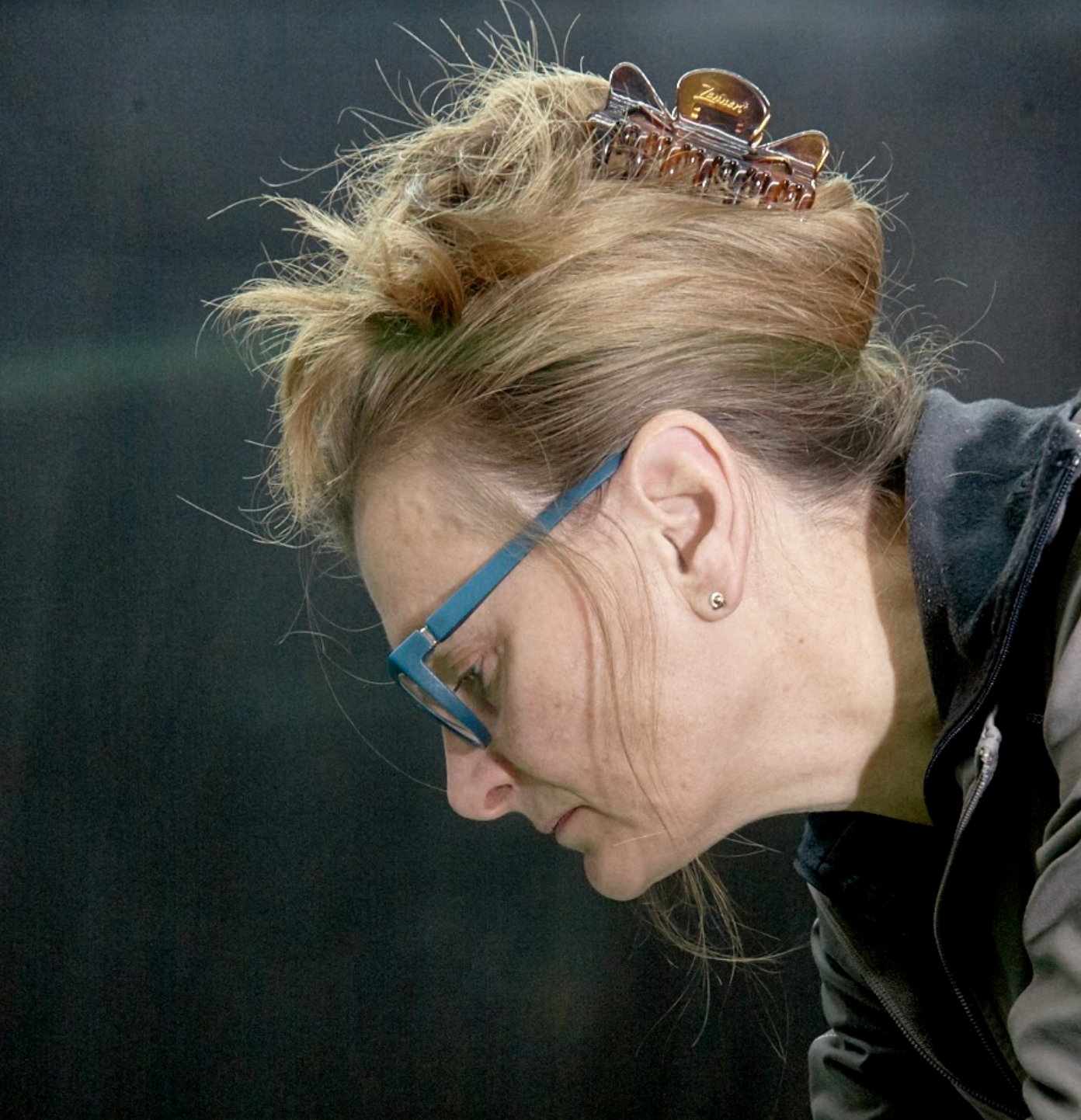
ジャクリーヌ・コーター
アムステルダムを拠点に活動するアーティスト、ジャクリーヌ・コーターの視覚芸術は人体がもつ力強さと脆さの両面、そして人間関係の複雑さを題材にしている。彼女の作品では「失うこと」が重要な役割を果たす。ここでの「失うこと」は最広義のそれ。たとえば、愛する誰かを失うこと。”心”の健康を失うこと。気候変動が起きる前の地球を失うこと。
サイトスペシフィックなインスタレーションと、綿密に作られた短編アニメーション映画の制作が専門。映像作品の中では紙とペンキで架空の世界を創造し、人型のフィギュアを動きまわらせる。時には本物の人間、あるいは紙の切り抜きの人物が動きまわることも。それらは実際に、あるいはストップモーションの手法で動いている。
ヨーロッパ、アメリカや香港などで過去に作品展示を行った。
映像作品はこれまでヨーロッパ(オランダ、ドイツ、オーストリア、ポルトガル、スウェーデン、ルーマニア、ハンガリー、セルビア、トルコ)、アメリカ、香港、インドネシア、ネパール、パキスタン、日本で行われた国際的な短編映画祭やダンス映画祭で上映された。
Jacqueline Kooter
The visual work of Amsterdam based artist Jacqueline Kooter is about both the strength and the vulnerability of the human body and about the complexity of human relations. Loss as a theme plays a role in her work. Loss in the broadest sense of the word (loved ones, -mental- health, the world by climate change).
She is specialized in making site-specific installations and in the production of meticulously made, short (animation) films. In these films she creates an imaginary world in paper and paint, where (human) figures are moving around; sometimes real people and sometimes (cut out) paper figures. They move in real time and/or by stop motion.
Jacqueline Kooter exhibited her work in Europe, the USA and Hong Kong.
Her films have been screened at multiple international (dance- and short-) film festivals in Europe (Netherlands, Germany, Austria, Portugal, Sweden, Romania, Hungary, Serbia, Turkey), USA, Hong Kong, Indonesia, Nepal, Pakistan and Japan.
Nocturn
夜想曲
3’58
監督・振付:Kai Welf Hoyme
ドイツ 2012
ダンス映画監督たちへのメールインタビュー
A Mail Questionnair to Dance Film Directors
インタビュアー・翻訳:黒田瑞仁
まず最初に、あなたについて教えてください。どういう作品を作ってこられましたか?
私の名前はKai Welf Hoymeです。38歳のアーティストで、ドイツのケルンとメンヒェングラートバッハを拠点にしています。2000年から映像、音声、写真、パフォーマンスとインスタレーションを扱う芸術活動を行なっています。私のビデオと短編映画は人の動きや身振り、物理的な空間や、個人、文化、社会ごとのさまざまなアイディアや想像力を扱います。たとえば2003年製作のダンス映画『バランス(Collapsing Body Research=倒れる体についての考察)』は体の動きと空間についての作品でした。2016年の最新作『スケルトン』はドイツのボーフムにあるルール大学のユートピア的な建築同士の関係性や隙間についての作品で、振り付けのように組み合わされた手振り、音、そしてユートピア文学『太陽の都』を朗読する声からなっています。私の映像作品は典型的なダンス映画を振付けされた身振り、そして振付けされたカメラワークを用いることで発展させたものです。
実写とアニメーションが入り混じっています。なぜこのような手法をとったのでしょうか。
実写と手書きアニメーションを併用することは、この作品の中心になるアイディアです。女性の心象風景を描き出すことが目的です。アニメーションは実写では表せない形で出来事や感情を描くことができます。実写では、感情や肉体が変化する瞬間を描くことが難しいのです。それにアニメーションでは、アニメーターの手の動きを感じることができます。二つの手法を混ぜることで振付された手の動きと、紙の上をはしるペンの動きを出会わせることができるますし、独特の雰囲気も生み出されます。
「夜想曲」というタイトルと内容から、不安な夜を連想しました。ただし始まりのシーンは昼間のようです。あのシーンにはどういった意味があるのでしょうか。
日中のシーンからはじめることで、昼から夜への移り変わりを表現しました。さらには外界から秘められた内部へと表現を移行させています。作中の女性の精神的、詩的な領域を描きだしたのです。
手や、髪の毛など、特定の体のパーツが集中的に写っていたように思います。なぜこれらのパーツに注目しているのですか。
私は体の部位に注目するために、近接撮影を用います。手と髪は伝統的に、ヨーロッパ文化ではその個人を良くあらわすとされてきました。象徴としても隠喩としても重要な部位です。たとえば本作中では髪が伸び、手を裏返すシーンがあります。
この作品の内容はうるさくも激しくもなく、むしろとても静かでじっとしています。ダンス映画で静止と静寂を扱おうと思ったのはなぜですか。
この作品で意識しているのは変身と失語、つまり喋ることができない状態です。これらは肉体と精神のどちらの面からも意味を見いだせる題材です。この作品は典型的なダンス映画ではありませんがダンスの振り付けのように、要素を組み合わせることで静寂をつくり出しています。作品の構造自体が、意味内容を反映しているわけです。
失語というのは、言語的にも身体的にも不自由を感じる状態なのではないかと思います。表現とは自由で開放的なものと語られることも多いですが、「夜想曲」のような不自由さの表現にはどのような可能性があるとお考えでしょうか。
映画の視聴覚言語や、身体の動きとジェスチャーからなる視覚言語には、人間の思考や振る舞いのなかの言葉にならない隠された事柄を描き出し、明らかにする力があります。失語症は言語の不調です。私の短編映画『夜想曲』はこの失語状態をほかの調査方法(例えば科学は、現象を定義し説明するに止まります)とは違い、芸術的かつ詩的な手法で写し出し明らかにしています。詩的な形式となった映画と振り付けにはこの事象についての開けた視座をつくりだす力があります。
Please tell us about you, and what kind of films you have made in the past.
My Name is Kai Welf Hoyme. I am a 38 years old artist, living and working in Cologne and Moenchengladbach, Germany. Since 2000 I am working artisticly with moving images, sound / audio, photography, performance and installation. My videos and shortfilms deal with the relation between the body movement and gesture, the physical space and different personal,cultural and social ideas and imaginations. For instance my dance video Balance ( Collapsing Body Research) from 2003, is about body movements and a physical space. My recent experimental video Skeleton from 2016, deals with the interrelation and the gap among the utopian architecture of the Ruhr-University of Bochum, choreographed hand gestures, and a sound and voice fragment from the utopian text The City Of The Sun. My film work has developed from a kind of classic dance film to films, which contain choreographed gestures and choreographed camera movement.
There is live action and animation mixed in this film. Why did you combine these?
The idea to combine live action and hand drawn animation is close to the main idea of the film, to give an insight into a inner landscape of a woman. Due the animation can show incidents and emotions, that you cannot express by using live action. Its difficult to express moments of emotional and physical metamorphosis with live action. You can find the hand movement of the animation artist in the animation sequences, too. By this way you can combine choreographed hand gestures and the movement of the pen on the paper. This method creates also a special atmosphere.
From the title “Nocturn” and the restless atmosphere, the film strongly brings up the image of nighttime. Then again, the film starts from a daytime scene. What is the meaning of this?
My film Nocturn starts from a daytime scene to show a passage from the day to the night. From the outside to the hidden inside, the mental and poetic space of the woman.
Specific body parts such as hand, hair, etc. seemed to be closed up in the film. Why is this?
I use the close-up to focus on this body parts. Hand and hair have a strong personal meaning and symbolical and metaphorical power in the european culture history. For instance you can watch scenes, were the hair grows and the hand turns.
What is filmed here is hardly loud or active, but very still and silent. Why did you prefer to handle stillness and silence in a dance film?
The film circles the topics of metamorphosis and aphasia, the loss of the ability to talk. This topics have certain physical and mental meanings. So its not a classic dance film, but creates a silent mood with choreographical elements. The form of the film fits to the content.
Aphasia is a state of linguistic and physical inconvenience. Expression is often understood as something free and open, but what are the possibilities for the expression of inconvenience, as in "Nocturne"?
The audio-visual language of film and the visual language of body movements and gestures have the power to express and show non-verbal and hidden phenomena of the human mind and behavior. Aphasia is a disorder of the language. My short film Nocturn tries to articulate and reflect this state of mind with artistic and poetic means, while other ways of researching e.g. like science will only describe and clarify this phenomenon. The poetic forms of film and choreography have the power to create an open perspective on this phenomenon.
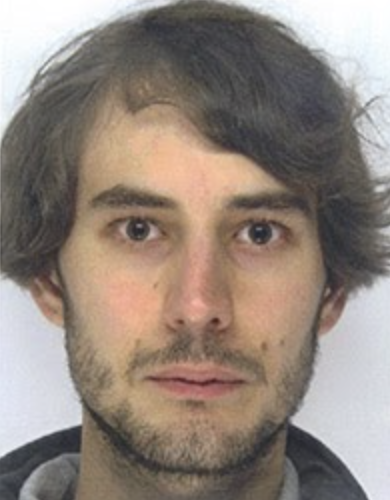
カイ・ヴェルフ・ホイム
カイ・ヴェルフ・ホイムは1979年、ドイツのモーエンヒェングラートバッハ生まれ。
ドイツのケルンとモーエンヒェングラートバッハを拠点に、インターメディア・アーティスト、映像作家として活動。映像、パフォーマンス、写真、インスタレーションなどの作品のためにイメージ、身体のジェスチャーと動き、音、空間とテキストを融合している。
RUBで修士号、ケルン・メディア芸術大学で美術学修士号を取得。2003年からは、イメージ・フェスティバル・トロント、ヨーロッパ・メディア・アート・フェスティバル・オスナブリュック、キャビンフィーバー、アンカレッジ美術館、オーバーハウゼン短編映画祭、ダーバン国際映画祭、ファイル・フェスティバル・サンパウロ、フレーム・リサーチ、ソアレス・ドス・レイス国立美術館、インビデオ・ミラノ、タイム・イズ・ラブ・ビデオ・アート・プログラム、ZKMカールスルーエ、ケーキシステンツ、シュロス・リート美術館、北京国際短編映画祭 愛とその他の視点、59. ヴェネツィア・ビエンナーレ ピクニック・パビリオンなどで作品を発表。
Kai Welf Hoyme
Kai Welf Hoyme was born 1979 in Moenchengladbach, Germany.
He lives and works as an intermedia-artist and filmmaker in Cologne and Moenchengladbach, Germany. In his films, performances, photoworks, installations he connects (moving-) image, body gestures and movement, sound / audio, space and text.
He holds a MA from RUB and a MFA from the Academy of Media Arts Cologne. Since 2003 he exhibits his films and artworks, including Images Festival Toronto, European Media Art Festival Osnabrueck, Cabin Fever, Anchorage Museum; Shortfilm Festival Oberhausen, Durban Intl. Film Festival; File Festival Sao Paulo; Frame Research, Museum National Soares dos Reis Porto; Invideo Milano;Time is Love video art program, ZKM Karlsruhe; Koexistenz, Museum Schloss Rheydt; Beijing International Short Film Festival and Love and Other Perspectives, 59. Venice Biennale, Picnic Pavilion.
Beach party animal
ビーチ パーティー アニマル
20’38
監督:Liz Aggiss and Joe Murray
イギリス 2011
ダンス映画監督たちへのメールインタビュー
A Mail Questionnair to Dance Film Directors
インタビュアー・翻訳:黒田瑞仁
あるプロジェクトと関連して作成された作品だと聞きました。この作品はどういった経緯で作られたのでしょうか?
私たちは通常は短編であるダンス映画を物語性のある長編として前進させたいと考えていました。既存のドキュメンタリーからコレオメンタリー(choreo-mentary 訳者註:振り付け+ドキュメンタリー)を創出し、観客が見たものが事実なのか虚構なのかを積極的に批判的に問うようなダンス言語を作りたいと考えていました。私たちは、編集室の中で振り付けが組み立てられるダンス映画を作りたいと考えていました。2008年にはリズ・アギスが、ダンス・フェスティバルで一連のライブ・ゲリラ・ダンスを製作しました。観客の満足感を阻害するために、パフォーマンスの前、後、休憩中に何もない空間に侵入し「ゲリラ」しました。これらのアイデアはすべて『ビーチ パーティー アニマル』の創作に影響を与えています。
使用されている映像のどの程度が偶然撮れたもので、どの程度がダンサーを使って意図的に撮影されたのですか。構成はどの時点で決まったのでしょうか。
『ビーチ パーティー アニマル』は、ブライトンビーチで意図的に撮影された部分と、実際の日常的な出来事の記録を巧みに編集、ミックスした作品です。あなたが「知る立場」にない限り、ゲリラ的な「やらせ」と実際に起きていたことの記録素材を見分けるのは難しいでしょう。
固定されたフレームを使うことで、すべてのシーンに埋め込まれている自然体の振り付けをわかりやすく見せています。24時間以上の予定を組んで素材を撮影し、収集しました。これにより編集された完成版に構成が生まれるのです。私たちはパフォーマーと一緒に、相談の上の即興や稽古済みのシーンも撮影しました。ゲリラダンス用には長焦点レンズの「パパラッチ式」の撮影技術を使用しました。クルーは私たち二人だけで、装備は軽く、追加の照明は使用しなかったので、見られず気づかれずに素材を撮影することができました。『ビーチ パーティー アニマル』は、必要に応じてインスタレーション展示する際にループ再生することができるようにも作られています。
全体を通してとても楽しい作品です。ビーチで気ままに過ごす人々が、パーティで好き勝手踊る人たちのように見えてきます。あなたの考えでは、人々はビーチやパーティに何を求めて行くと思いますか?
ブライトンビーチは人々が楽しみ、見られるために集まる場所です。ビーチは、公共空間の中でプライベートな時を満喫するための場所です。眠るために、人を見に、泳ぐために、パーティーに、お酒を飲みに、エクササイズをしに、考えに、愛しに、楽しむために。『ビーチ パーティー アニマル』は、眠らない海辺の街であるブライトンへのオマージュです。
音と音楽もこの作品が持つコミカルさを支える大事な要素になっていると思います。音の使い方と狙いを教えてください。
『ビーチ パーティー アニマル』は、人間の営みについての人類学的な調査であり、人の動きに本来備わっている動物的な性質についての考察です。この「動物的」な性質は、音楽とSFXをコメディ的に使うというアイディアの元になっています。
アラン・ブアマン(ウィービー)によるサウンドトラックは、絶妙な調整のミックスで、超現実的な印象を与えています。こうなったわけは「やらせ」でゲリラ的な振り付けが、独特でリズミカルな音楽性をもとにつくられていたからであり、作曲家のアラン・ブアマンが折衷的で、型破りな、危うく不条理な強調されたアプローチで「音で描く」ことを提案したからです。当初この映画は、背骨となる音や音楽がなく編集され組み上げられていました。最終的にアギスとマリーは、SFXをユーモアを添えつつも、第四の壁を越えて観客に体感を共有するために不可欠なものと考え映像に重ねました。
I came across information that this piece was made in a relationship with some projects. Why was this film made?
We wanted to develop longer narrative-driven screen dance beyond the usual short form: repositioning the documentary form as a choreo-mentary: and create a dance language that invited the audience to actively and critically question whether what they see is fact or fiction. We wanted to create a screen dance where the choreography was constructed in the edit suite. In 2008 Liz Aggiss created a series of live Guerrilla Dances that she performed as interventions at dance festivals. Invading, or ‘guerrilla-ing’ empty performance spaces before, after and during intervals, Guerrilla Dances interrupted audiences complacency. All these ideas inspired the making of Beach Party Animal.
How much of the scenes were made intentionally with dancers, and how much of them were shot by chance? At what point did you come up with the composition?
Beach Party Animal is an artful, deftly edited and cunning mix of staged set-pieces and real-life action, shot on location at Brighton beach. Unless you are ‘in the know’, it is hard to distinguish the guerrilla ‘plants’ from the real-live action.
Using a fixed frame to highlight the naturalistic and embedded choreography in every scene. we captured and gathered material over a 24 hour cycle. This gives compositional structure to the final edit. We created with our performers, pre-determined improvisations and rehearsed set pieces. For the guerrilla dance interventions we used the long lens and ‘paparazzi style filming techniques. We were a crew of two, lightweight kit, no additional lighting, so we could capture material undercover and unseen. Beach Party Animal was created to be looped, if required, as an installation.
The film has a happy atmosphere as a whole. The people spending their time freely by the sea looks like people dancing at parties. Why do you think people go to beaches and parties?
Brighton beach, is a place where people come to have fun and be seen. The beach is a place to indulge in private moments within a public space: to sleep: to people watch: to swim: to party: to drink: to exercise: to think: to love: to have fun. Beach Party Animal is an homage to Brighton, the seaside city that never sleeps.
Music and the sound effects contribute deeply to the comical touch this film has. What aim did you have when using the music and sound effects?
Beach Party Animal is an anthropological investigation of human behaviour that considers the zoomorphic qualities innate in human movement. These ‘animal’ qualities were part of the comedic ideas embedded into the music and SFX.
The soundtrack by Alan Boorman / Wevie, is a cleverly manipulated mix that adds to the hyper-real feel. The strategy proposed that each choreographic ‘plant’ / guerrilla choreography, was created with inherent rhythmic musicality, and the composer Alan Boorman would ‘write to picture’ with his eclectic, informal risky, absurdist, expressive approach. The film was initially cut and composed without any guide sound/music. Finally Aggiss/Murray developed and overlaid the SFX as crucially important to cross the fourth wall and engage the audience kinaesthetically and with the humour.

リズ・アギス & ジョー・マリー
リズ・アギスは数々の受賞歴を有するダンス映画の振付家、演出家。彼女の作品は過去に英国放送協会BBC、オーストラリア放送協会(Channel 4 ABC Australia)、アルテ(Arte TV)の委嘱を受け、発表されている。ジョー・マリーはフリーランスの映画作家で、ドキュメンタリー映画『ゴミ箱の中のスキャンダル』で2002年の英国アカデミー賞 ジョン・グリアソン賞にノミネートされた。ブリティッシュ・カウンシルとサウス・イースト・ダンス2010によって製作されたダンス映画集「フォワード・モーション」のシリーズ・ディレクターを務めた。リズとジョーは短編ダンス映画「DIVA」で共作し、香港ジャンピング・フレーム・スクリーン・ダンス・アワード2008 を受賞。『ビーチ パーティー アニマル』は二度目のコラボレーションとなる。
LIZ AGGISS & JOE MURRAY
Liz Aggiss is an award winning screen dance choreographer/director. Her work has been commissioned by, and presented on; BBC, Channel 4 ABC Australia and Arte TV. Joe Murray is a freelance film-maker and was nominated for a BAFTA Grierson Award 2002 for his documentary ‘Scandal in the Bins’. He was the Series Director for the screen dance package ‘Forward Motion’ published by The British Council and South East Dance 2010. Liz and Joe collaborated on the dance film short DIVA winning the Hong Kong Jumping Frames Screen Dance Award 2008. BEACH PARTY ANIMAL is their second collaboration.
